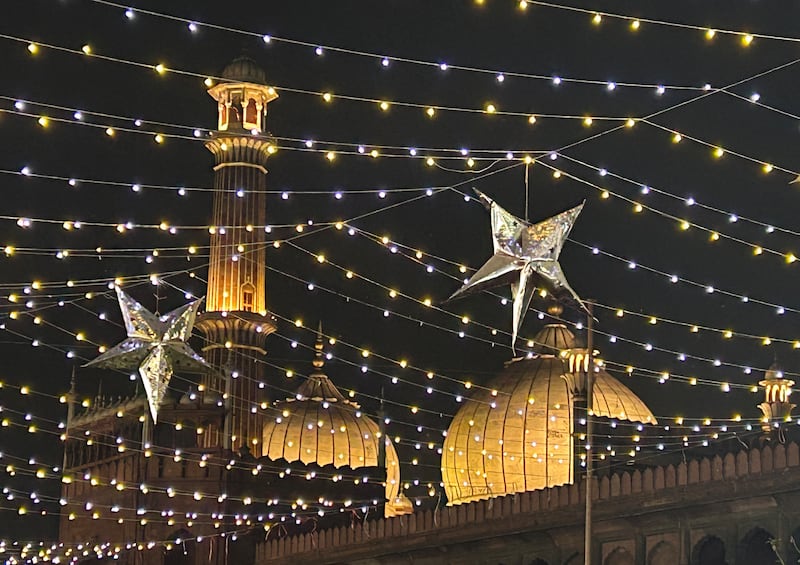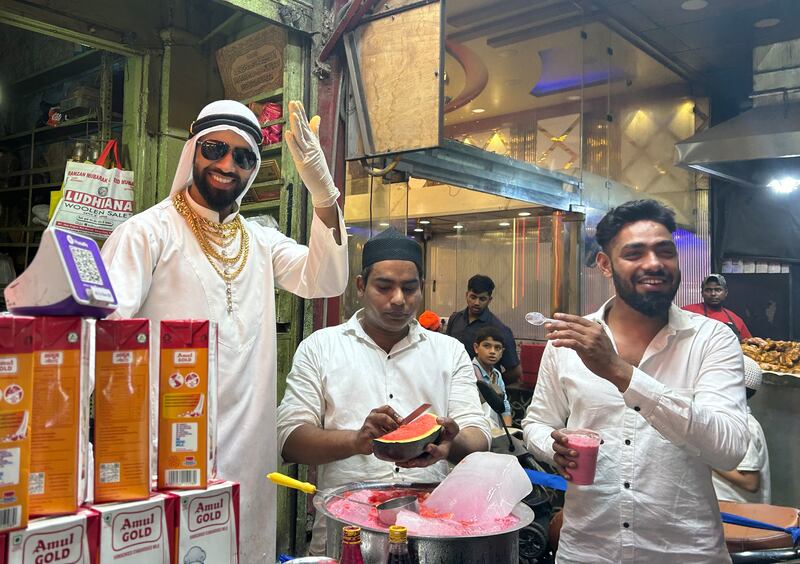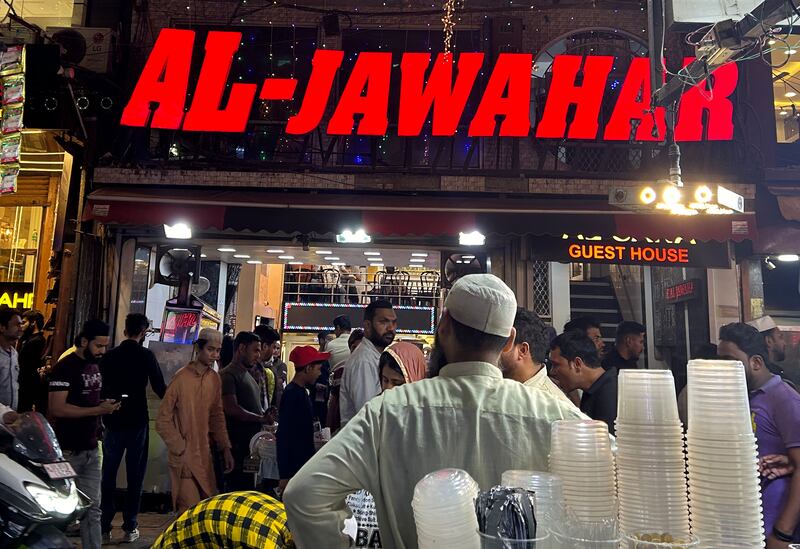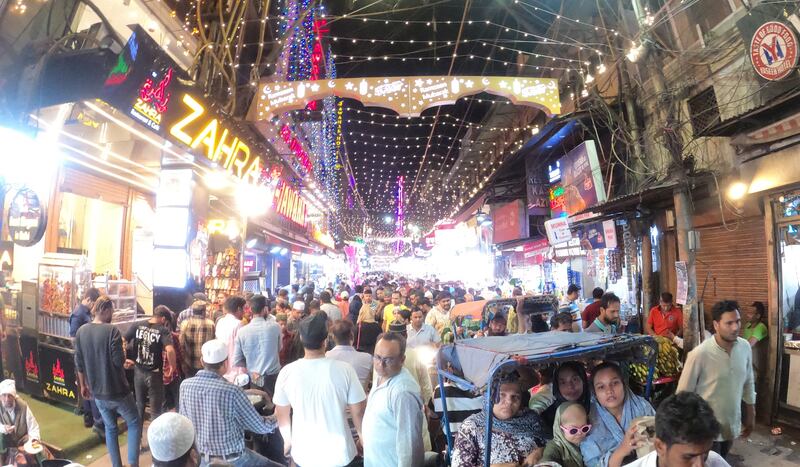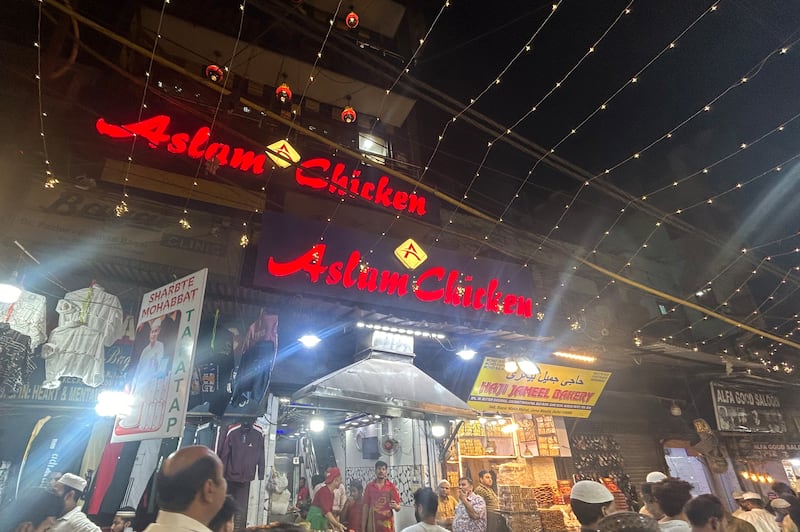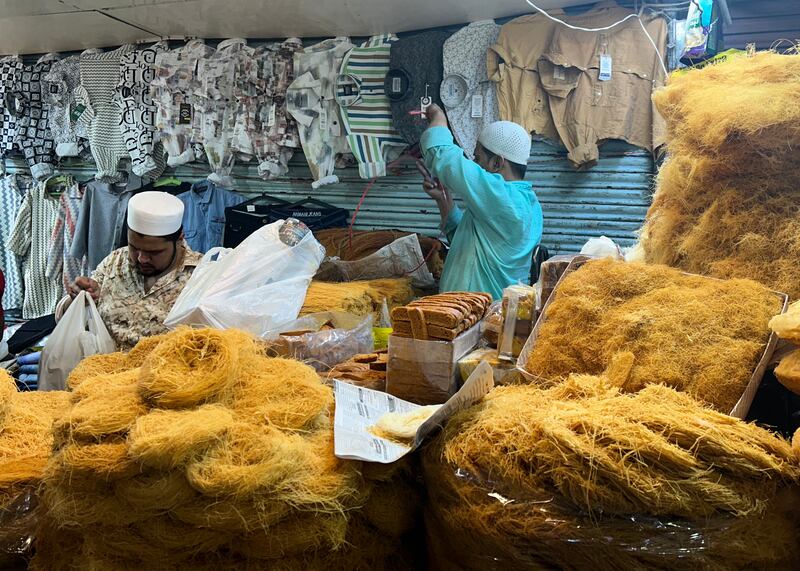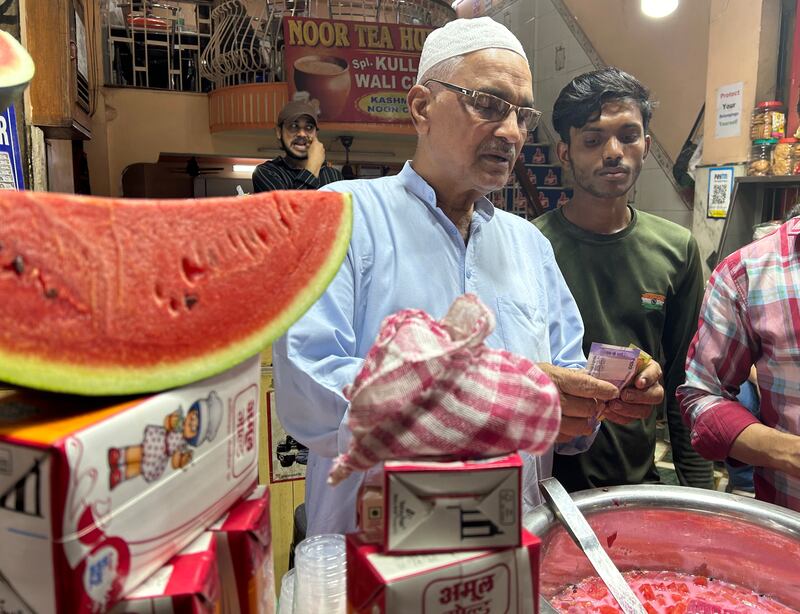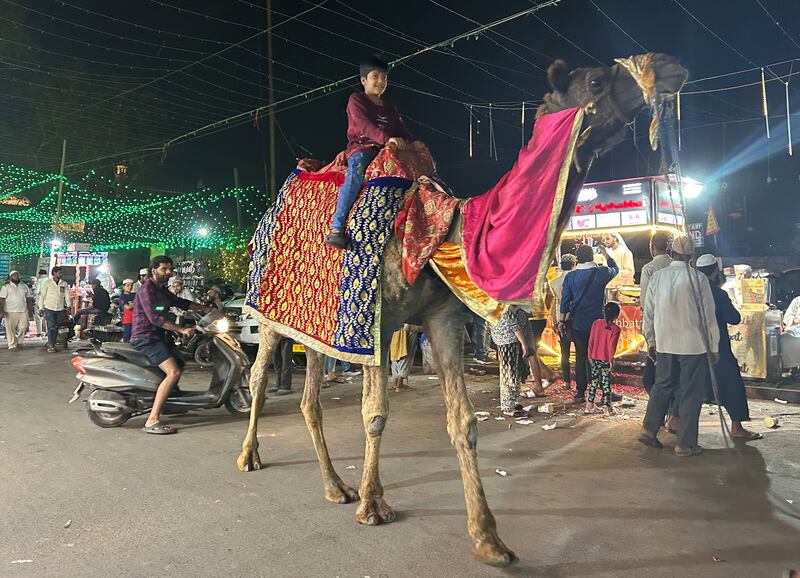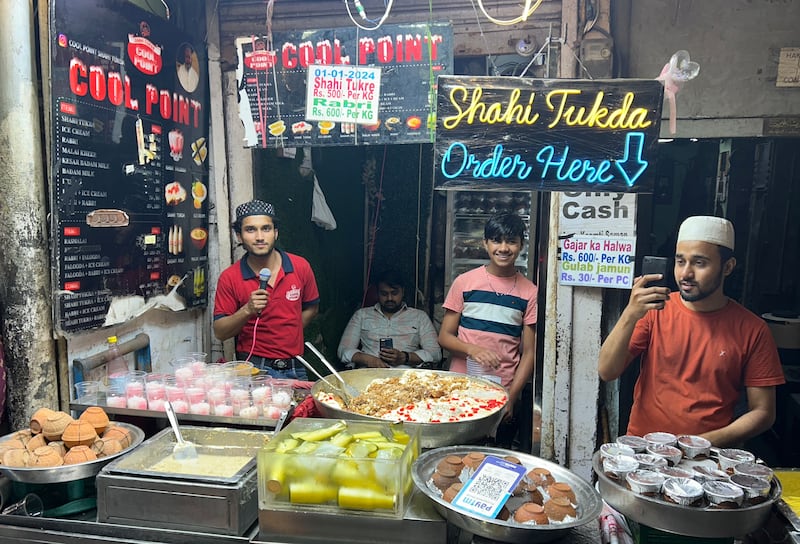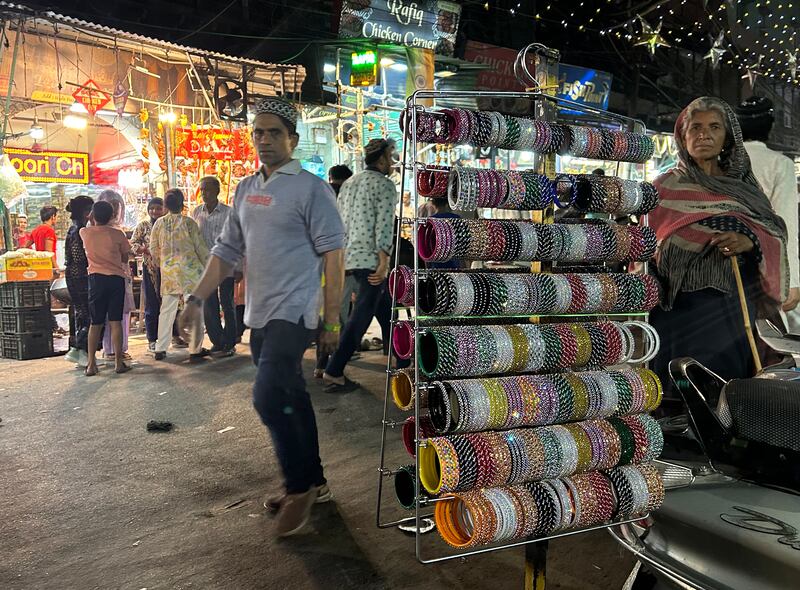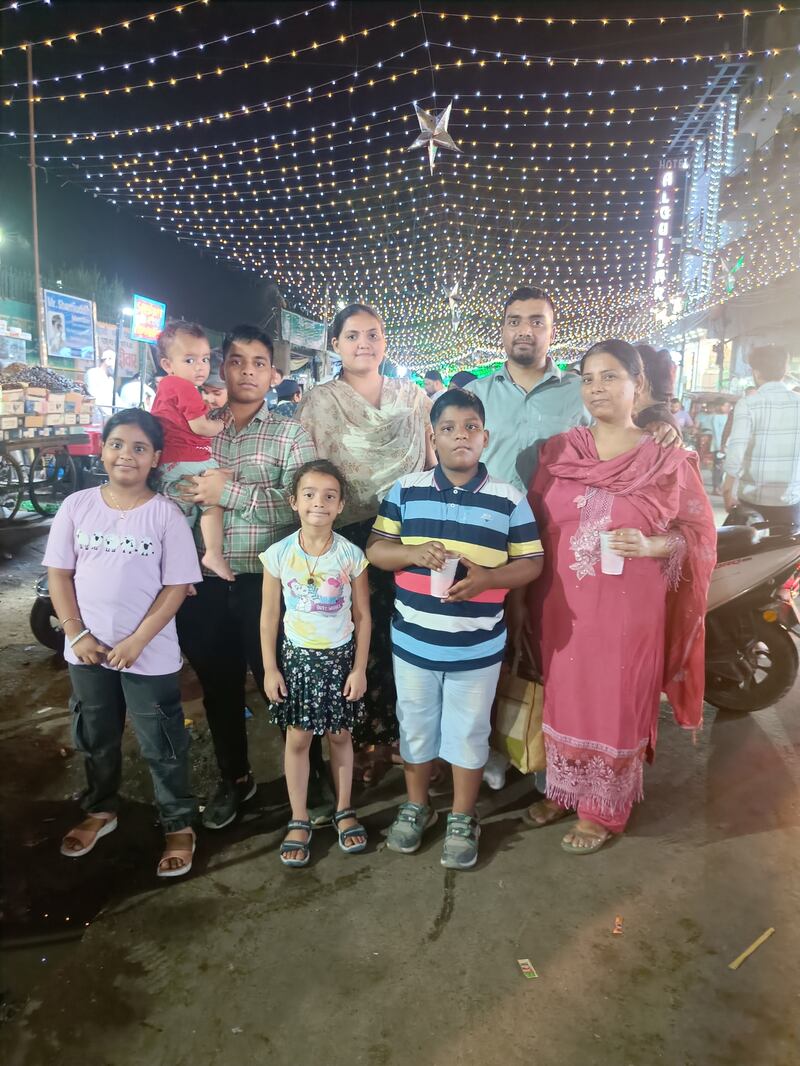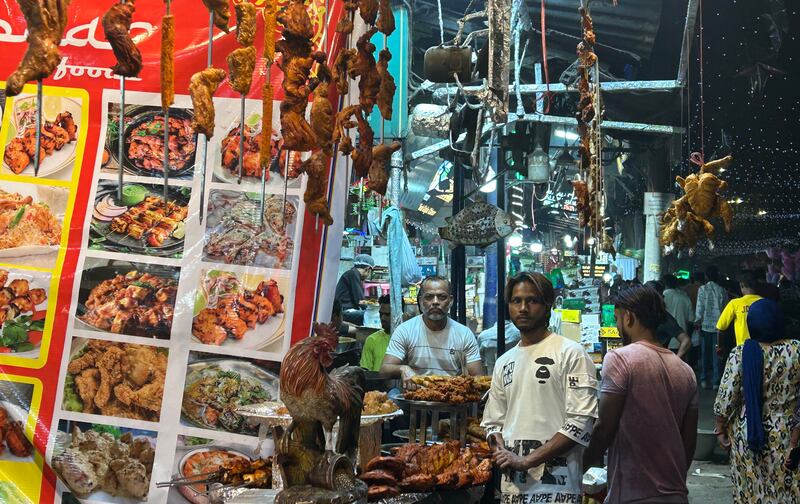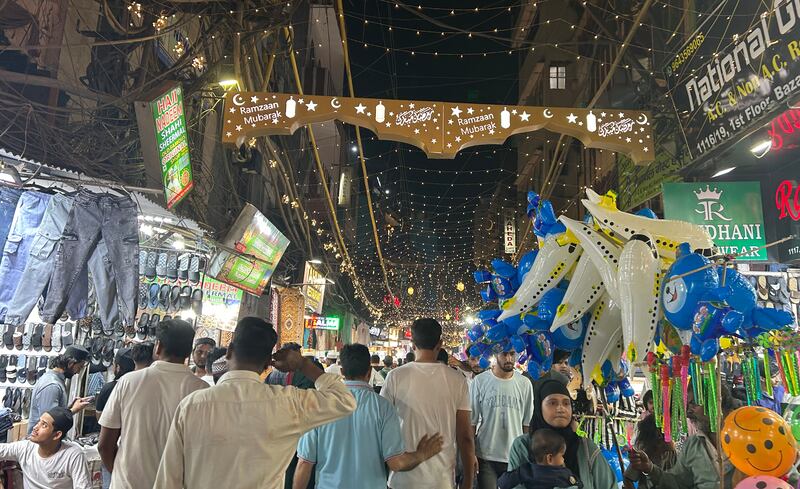
It is past midnight and silence has gripped the Indian capital, New Delhi.
The cacophony of endless traffic has faded into silence in one of the world’s most populated cities.
But in its oldest quarters, the fascinating Old Delhi, the day has only begun.
The historic alleyways are teeming with people – as hundreds of worshippers returning from the medieval Jama Masjid mix with hordes of diners who have come to experience the spirit of Ramadan.
Cafes and restaurants, especially those offering Ramadan specials, are packed.
Children enjoy a camel ride under a canopy of twinkling lights spread out over the bustling market.
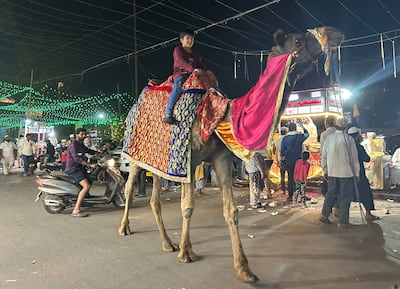
Young couples walk hand-in-hand after enjoying a meal, while groups of women choose from varieties of dates imported from the Middle East for ‘iftar’.
Some end the fast with sheermal, a traditional sweet flatbread, which has its origins in the Middle East.
A heady waft of attar, an oil-based perfume, blended with irresistible aromas of spicy succulent kebabs and the smoke from clay ovens, fill the air.
Old Delhi hardly sleeps at night during the month-long Ramadan.
Cheena Lahot, who came from Delhi’s Uttam Nagar with her family, told The National that “it feels surreal”.
“While most of Delhi sleeps at this hour, look at the fresh faces, people seem to have just woken up. The market comes alive here in the evenings,” she said.
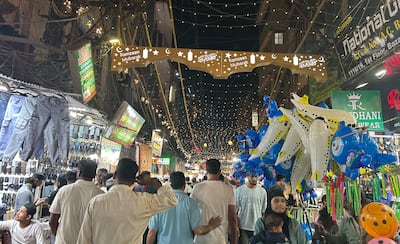
Ramadan spirit
Locally known as Purani Dilli, Old Delhi is the heart of the city, a melting pot of cultures.
It bears testimony to the Indian capital’s centuries-old history − including the opulent Mughal period and British colonial rule – and its credentials as a foodie's paradise.
The walled city was founded by Mughal Emperor Shah Jahan in 1639, which he named “Shahjahanabad” after himself.
It was a bustling city where people from various religions, mostly Hindus, Muslims, Christians, and Sikhs, lived.
It was home to one of India’s most prominent Urdu poet Mirza Ghalib and courtesans and artists who performed at the Mughal court.
The city served as the seat of power for the Mughals until the end of their dynasty when the British took over the reins and shifted the capital to New Delhi.
Centuries later, Old Delhi has held on to its unique cultural landscape.
It is packed with tourists and food lovers throughout the year, particularly in Bazaar Matia Mahal market where countless cafes and restaurants sell Mughal-inspired dishes.
But it transforms into a unique tapestry of Hindu-Muslim harmony during Ramadan, as people from all religions descend to the area to experience the distinct festival mood.
“Every year during Ramadan we come here to experience the unique evenings. We enjoy the meat dishes. It feels wonderful to see so many people taking part in celebrating this pious month,” Mrs Lahot said.
Ramadan specialities
Food has a religious and cultural significance during the Islamic holy month and Old Delhi is one of the best places to experience this.
From keema samosa, a sambousa-inspired savoury pastry brought to India by Arab traders, to a variety of halwa, another Arab-inspired dessert, and meat dishes, the choices are endless.
But one of the most popular items sold during Ramadan is mohabbat-e-sharbat, or the sherbet of love.
A quintessential bright pink drink, it is made with rooh afza, an ultra-sweet concoction of herbs and fruit with a strong rosy aroma. The cool and sugary drink is made with milk or water and garnished with diced watermelon.
It is believed to provide much-needed energy after a long day of fasting, just like the popular Vimto drink in the Middle East, and is a staple thirst-quencher for Muslims during fasting month.
The popularity of the drink is such that devotees can buy up to a litre of the sherbet to drink it down immediately after the signal for iftar, said Mohammed Khalil.
The 61-year-old sells the drink at his tiny stall every year.
“I sell about 200 glasses of the sherbet every evening. People especially come to drink this. They say it cools their parched throat,” Mr Khalil told The National.
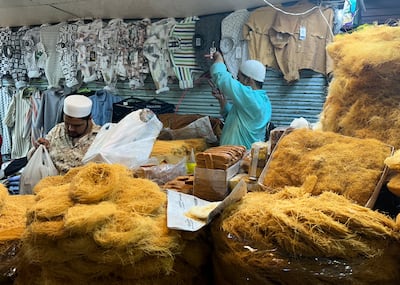
Lucrative business
Although most restaurants remain shut during the day, as people observe a dawn-to-dusk fast, businesses witness a surge in footfall during the evenings.
Restaurants serve food all night and vendors sell their fruits on carts. Temporary stalls selling crockery, household items, bangles, footwear, and caps of different designs and vivid colours also spring up in the crammed market for one month.
One of the famous items is sewaiyan, or vermicelli, a popular fine ‘noodle-like’ dessert served in suhoor in the subcontinent. It is roasted in clarified butter and soaked or boiled in milk.
Women buy raw vermicelli to make it from scratch.
“We sell ten varieties of sewaiyan. It is a popular dessert and there is a huge demand for it. We sell about 300kg of sewaiyan every day,” said Azizul Haq, 51, who has been running his stall for two decades.
